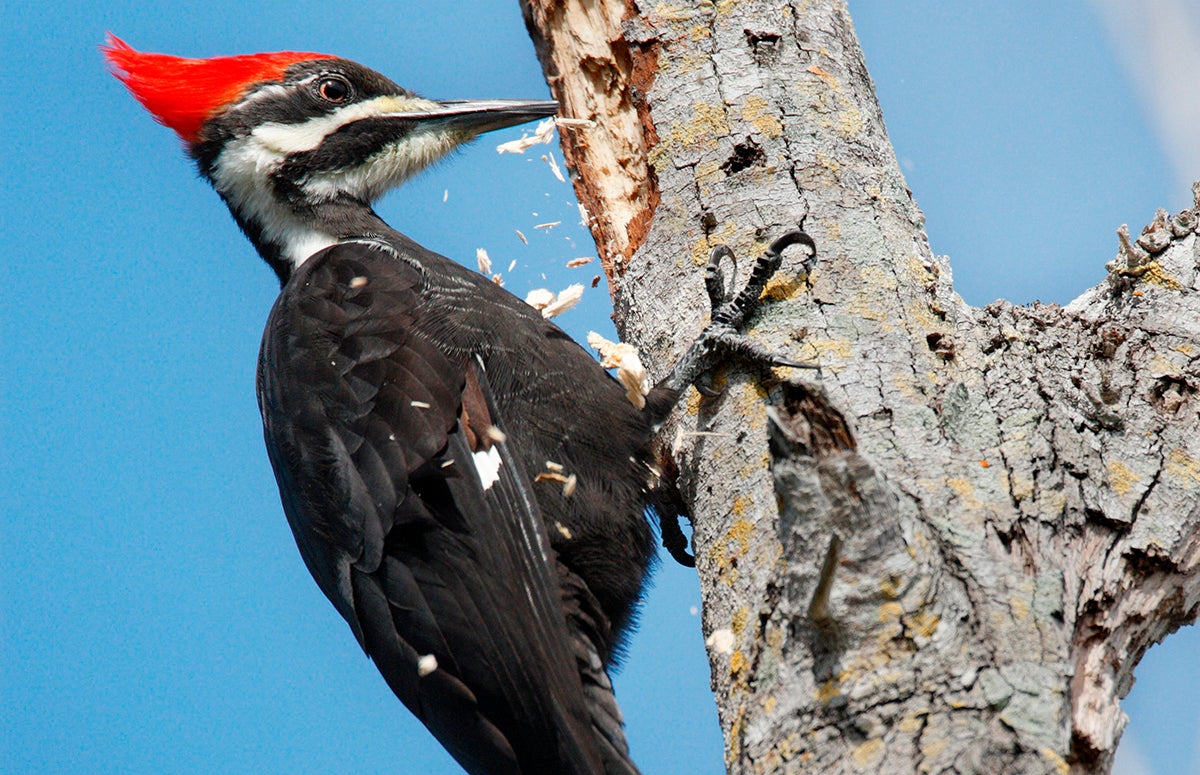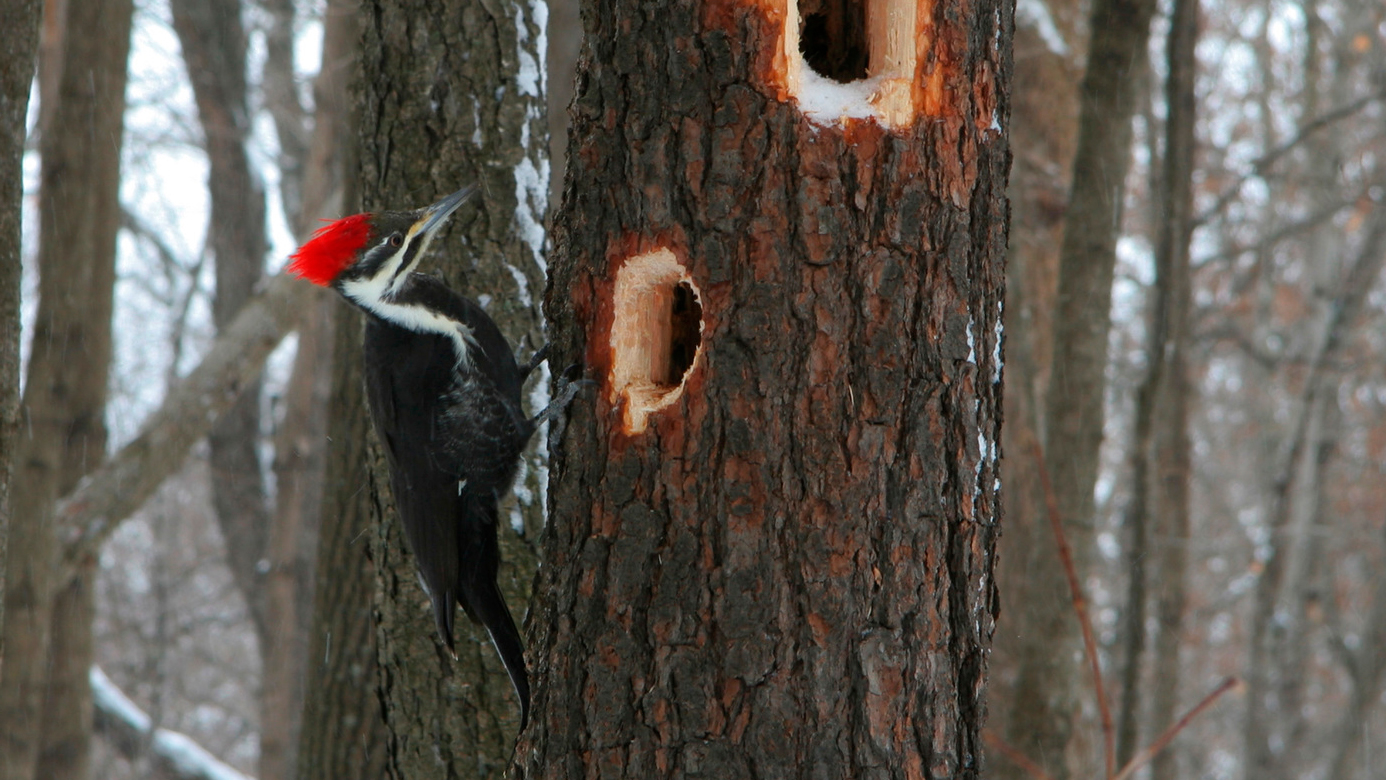Woodpeckers Unleashed: Discovering the Wonders of These Experienced Tree Mountain Climbers
Woodpeckers, with their distinctive markings and balanced drumming echoing through wooded locations, hold an one-of-a-kind location in the bird world. Their specialized composition and adjustments allow them to browse vertical surface areas with exceptional ability. Their proficiency of tree climbing is just one element of their remarkable habits. As we dig right into the complex details of woodpeckers' nesting habits, feeding techniques, and the ongoing preservation efforts to safeguard these impressive birds, a much deeper admiration for their location in nature unravels.
Composition and Adaptations
When taking a look at the composition and adjustments of woodpeckers, one can observe impressive functions that make it possible for these birds to flourish in their specialized ecological specific niche. Woodpeckers are furnished with a collection of unique anatomical characteristics that aid them in their woodpecking behavior. One of one of the most noticeable features is their strong, chisel-like beak, which is specialized for boring right into timber to discover bugs or produce nesting dental caries. This beak is supported by strong neck muscle mass and a highly created head structure that works as a shock absorber, permitting woodpeckers to repetitively peck at trees without causing brain injury. In addition, woodpeckers have zygodactyl feet, with two toes dealing with ahead and 2 facing backwards, providing a firm hold on tree trunks while they browse for food or drum for interaction.
Furthermore, woodpeckers have a special tongue structure that is long, barbed, and sticky, allowing them to draw out pests from holes in timber. This specialized adjustment permits woodpeckers to manipulate a food resource that is unattainable to lots of various other bird species. Overall, the anatomy and adjustments of woodpeckers display the exceptional transformative remedies that have actually enabled these birds to flourish in their arboreal environment.
Drumming Habits
Having explored the makeup and adaptations of woodpeckers, the emphasis currently shifts to recognizing their drumming habits, a distinctive facet of their communication and territorial displays. Drumming is an essential type of communication amongst woodpeckers, serving numerous functions such as developing regions, attracting friends, and signaling alarm. Each woodpecker varieties has a special drumming pattern that helps people acknowledge participants of their own varieties and differentiate them from rivals or predators.
Woodpeckers generate drumming sounds by swiftly pecking on resonant surface areas such as dead trees, utility posts, and even steel items, developing a collection of rhythmic beats. The strength and speed of drumming can differ based on the objective; for instance, a quick drumming sequence might represent aggressiveness towards burglars, while a slower and softer drumming pattern can suggest courtship (Woodpeckers in Florida). Additionally, woodpeckers may change the regularity and duration of their drumming to communicate details messages efficiently
Nesting Behaviors
Exploring the nesting routines of woodpeckers discloses fascinating insights right into their reproductive habits and environment selections. Woodpeckers are recognized for their special nesting preferences, usually digging deep into cavities in trees to produce protected rooms for elevating their young. These tooth cavities serve not only as a nesting site however likewise as a safe and secure refuge from predators and harsh weather condition.
Woodpeckers show a high degree of integrity to their nesting websites, frequently returning to the exact same place every year. This actions highlights the relevance of appropriate habitat accessibility for their reproductive success. The choice of a nesting website is vital for woodpeckers, with variables such as tree varieties, elevation, and degeneration phase playing substantial duties in their decision-making procedure.
Remarkably, some woodpecker types are understood to excavate multiple cavities within their territory, providing themselves with different nesting alternatives. This approach might work as a form of insurance against possible hazards or disruptions to their main nesting site.

Feeding Strategies
One of the most distinctive feeding actions of woodpeckers is drumming, which entails quick pecking on trees to reveal pests underneath the bark. Woodpeckers are likewise understood to excavate tooth cavities in trees to access covert insect larvae or sap. Some species, like the acorn woodpecker, shop nuts in particularly developed openings called granaries.
Conservation Efforts
Among the detailed feeding methods displayed by woodpeckers, the conservation initiatives targeted at securing these interesting birds play an important function in preserving their environments and populaces. Woodpeckers face various hazards to their survival, consisting of habitat loss as a result of logging, climate change modifying their environments, and read this article accidents with my sources man-made frameworks such as buildings and lorries - Woodpeckers in Florida. Preservationists are actively functioning to deal with these challenges and make certain the long-lasting well-being of woodpecker types

Education and learning and public understanding campaigns are also essential elements of woodpecker conservation efforts. By increasing awareness concerning the relevance of these birds in preserving healthy woodland environments, guardians can garner assistance for habitat preservation efforts and promote liable land management techniques. With collaborative initiatives between scientists, policymakers, and local areas, we can collaborate to protect a future where woodpeckers flourish in their all-natural environments.
Conclusion
